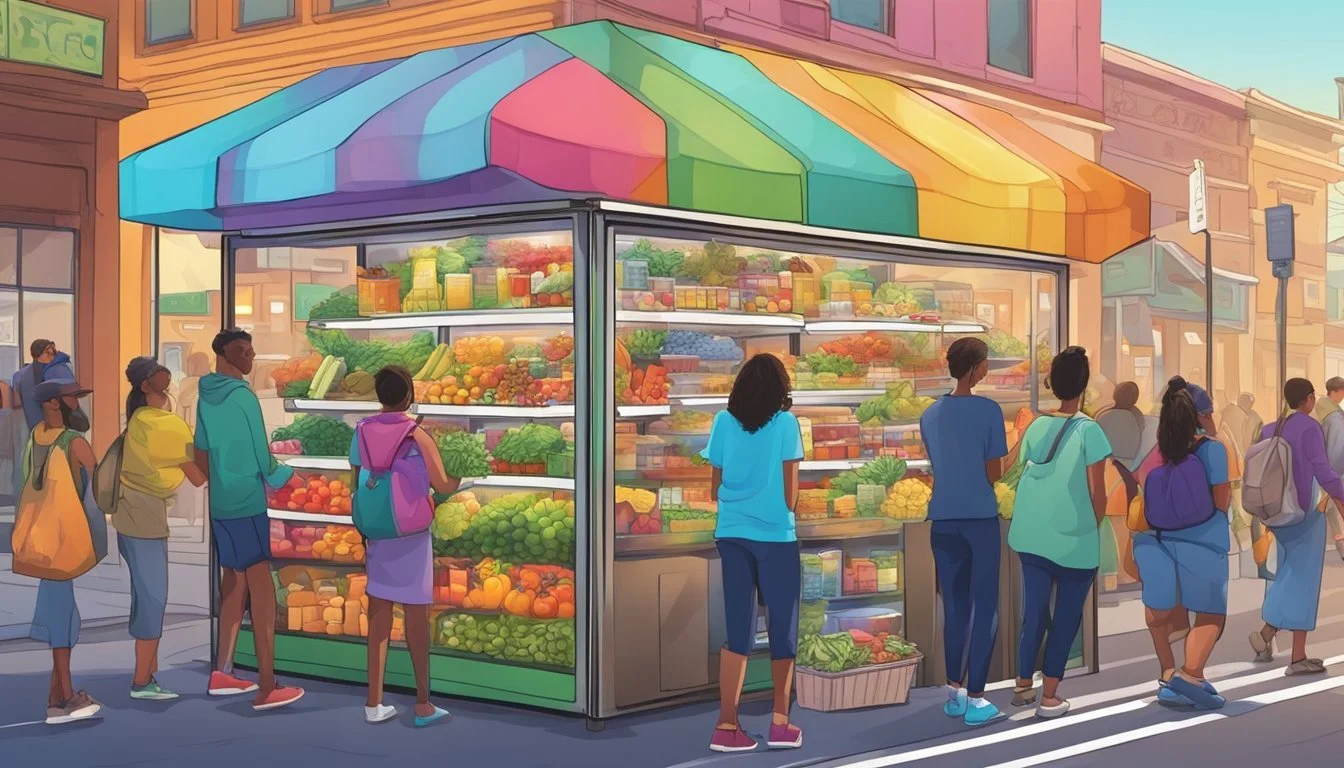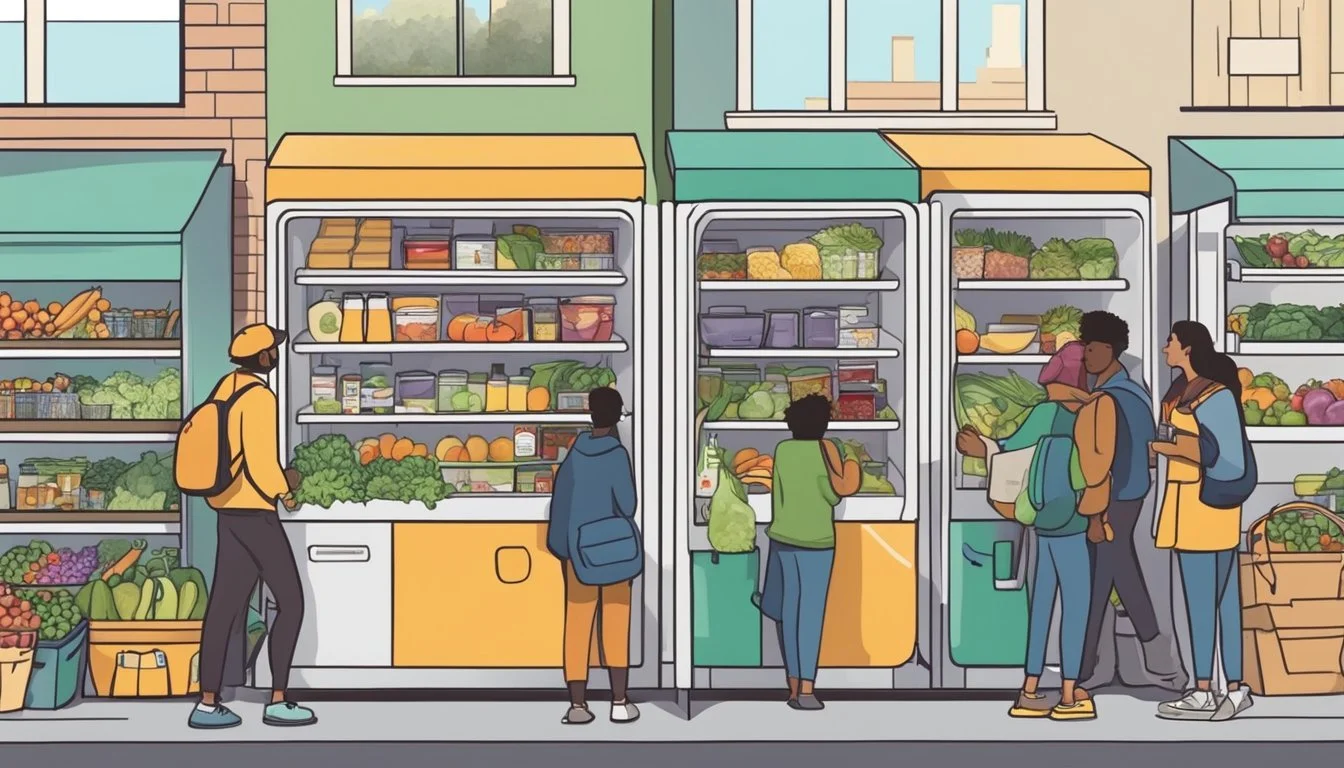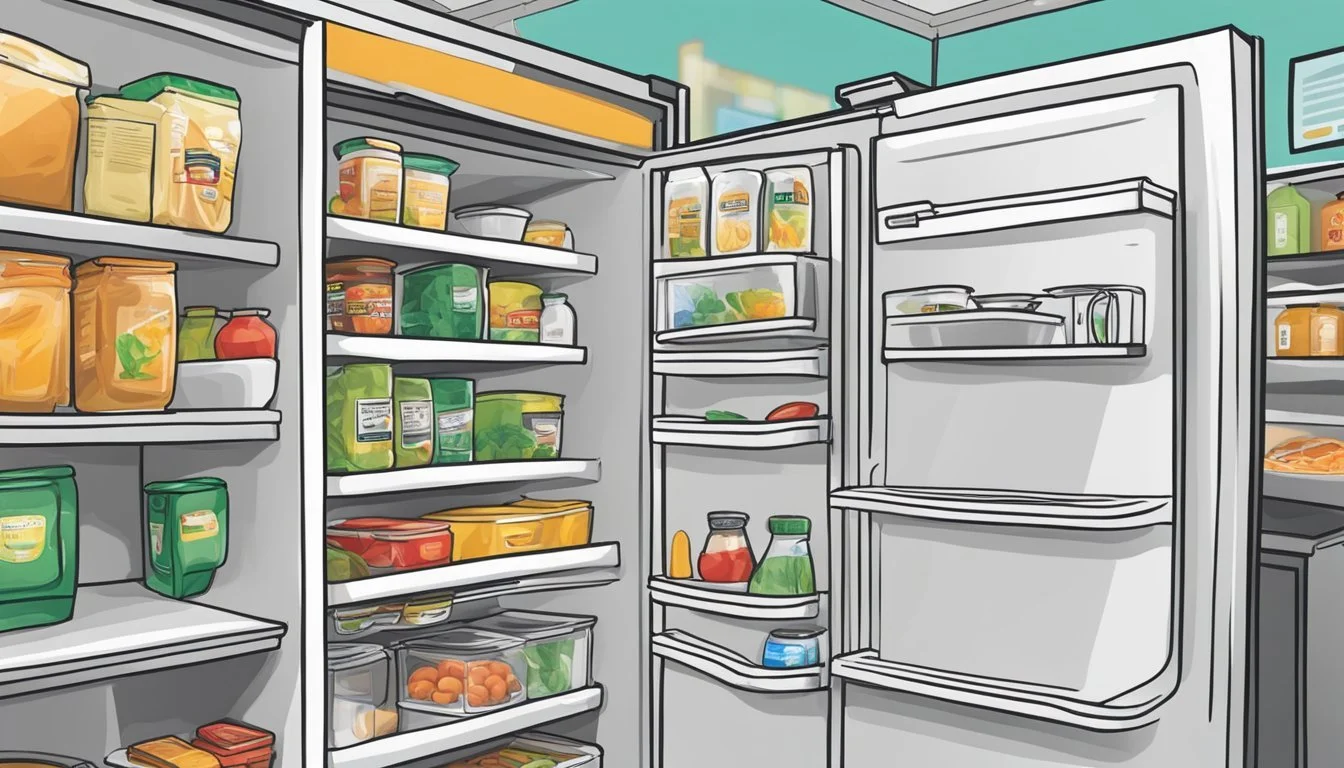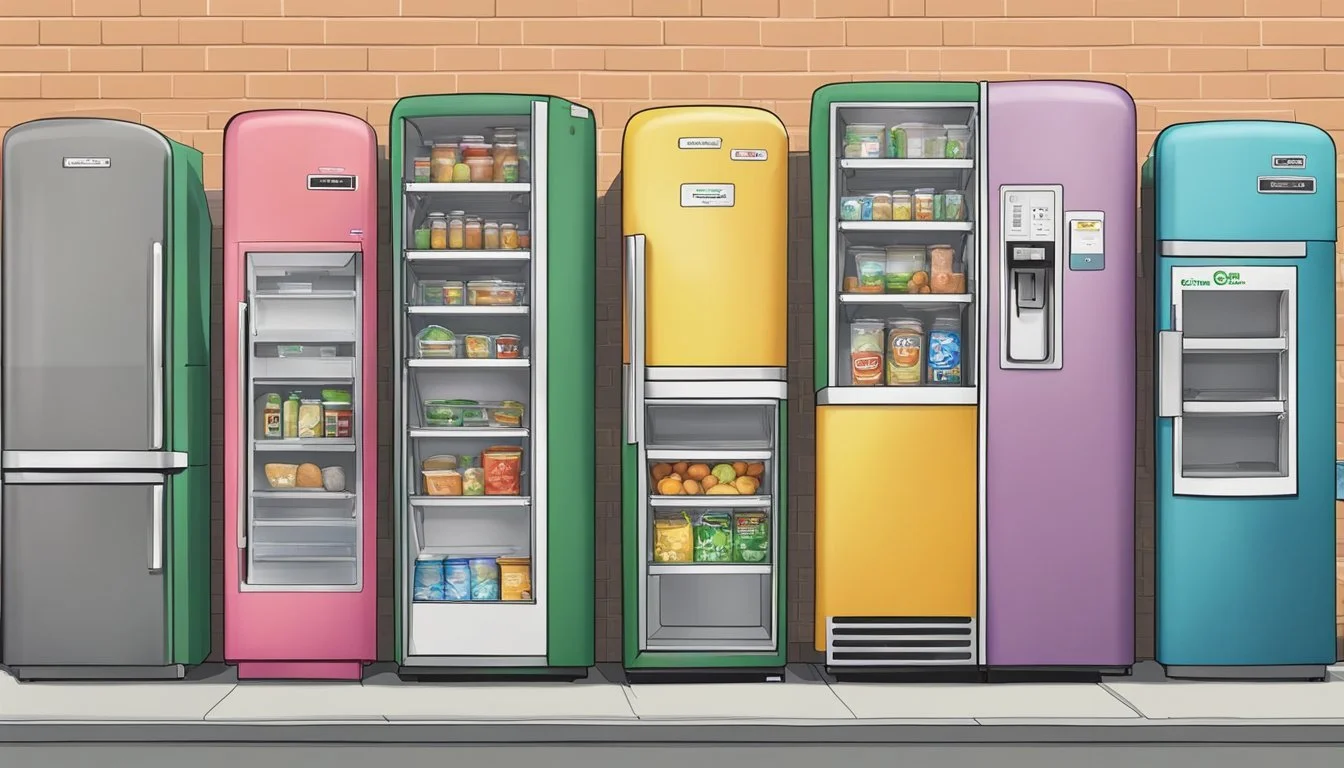Fremont, CA Community Fridge
Addressing Food Insecurity Locally
In Fremont, California, a city known for its innovative spirit and community-centric values, the Community Fridge initiative represents a grassroots effort to combat food insecurity and reduce waste. These refrigerators, often adorned with vibrant artwork, are publicly accessible and stocked with free, nutritious food intended for anyone in need. By allowing residents to give and take perishable goods as needed, these fridges offer a simple, dignified solution for people facing food scarcity.
The success of Fremont’s Community Fridges can be attributed to the collaborative efforts of local residents, community organizations, and volunteers who maintain and replenish the fridges regularly. This system is not only a source of sustenance but also fosters a sense of community solidarity. Through this initiative, Fremont demonstrates a commitment to supporting its residents while encouraging sustainable practices.
The implementation of Community Fridges in Fremont reflects the broader movement across cities to address food insecurity at a local level. It allows for an immediate and practical form of aid, highlighting the city's proactive approach to social issues. The fridges serve as a testament to the collective action that can stem from community awareness and compassion.
The Concept of Community Fridges
Community fridges are a growing initiative addressing food insecurity and waste by offering free food access to anyone in need.
Understanding Freedge and Its Mission
Freedge serves as a catalyst in the movement for food justice by promoting the installation of community fridges. These public refrigerators aim to empower neighborhoods through mutual aid, reducing food waste and increasing access to healthy food. The organization assists local groups in setting up these fridges, often fueled by volunteers who maintain and stock the units.
Global Roots: From Europe to America
The community fridge concept took root in Europe before spreading to the United States, where cities like New York City and Los Angeles have seen the spread of these fridges. In America, the fridges have been called "freedges" and have been established to foster community resilience, address food scarcity, and connect people to fresh, nutritious produce without cost barriers.
Community Fridge Initiatives
Community fridge initiatives across Fremont, CA, are effective steps in combating food insecurity and waste. These programs leverage public refrigerators to provide free food access to those in need and foster a sense of solidarity within the community.
FOCO Freedge
The FOCO Freedge operates as a community-driven refrigerator where residents can donate and retrieve food. It aims to address food scarcity and support local residents by providing an accessible platform to share surplus food, reducing waste and encouraging community interaction.
NYU Freedge
At New York University, the NYU Freedge initiative brings attention to student food insecurity by offering a communal refrigerator. The program helps to ensure that students have access to nutritious food without cost barriers, reflecting the institution's commitment to student wellness.
CSU Freedge
CSU Freedge resonates with the core values of environmental sustainability and community welfare. Situated at California State University, this program not only reduces food waste but also provides a buffer against food insecurity among college students and staff.
(N)ice Box Initiatives
The (N)ice Box Initiatives stand out with creatively named community fridges that serve as neighborhood hubs for free food exchange. These are placed strategically to enhance reach and uphold the collective effort of diminishing hunger and promoting resource sharing.
Setting Up a Community Fridge
Setting up a community fridge in Fremont, CA, involves a strategic approach, including finding a proper location, acquiring a suitable refrigerator, and ensuring proper installation. Each step is crucial to the fridge’s success and utility to the community.
Finding a Suitable Location
The location of a community fridge must be accessible and visible to the community. Ideal spots are businesses, housing complexes, or community centers that see regular foot traffic. It’s essential to obtain the necessary permissions from property owners or local authorities. A concrete, weather-protected area with electricity supply, like a garage or cafe, can provide a good home for the fridge.
Acquiring the Fridge
The refrigerator itself should be large enough to serve the needs of the community and efficient in its energy consumption. Here is a simple list to consider when acquiring a fridge:
Capacity: Must accommodate a significant amount of food.
Energy Efficiency: Energy Star-rated refrigerators should be considered to minimize operating costs.
Condition: Choose a new or gently used fridge to ensure longevity.
Source: Businesses may donate or offer refrigerators at a discounted rate.
Installation Requirements
Proper installation is key for the safety and longevity of the community fridge. The following installation requirements must be met:
Power Supply: A dedicated electrical circuit is typically required to power the fridge reliably.
Shelter: Protection from the elements, such as a shade structure or enclosure, will extend the life of the appliance.
Safety: Compliance with all local health and safety regulations is mandatory to ensure the wellbeing of the community and the operability of the fridge.
Additionally, a regular cleaning and maintenance schedule should be established to keep the food storage hygienic and prevent any health hazards.
Management and Maintenance
The Fremont, CA Community Fridge operates with a structured approach to management and maintenance, emphasizing on a consistent schedule, meticulous handling of donations, and regular cleaning protocols to ensure safe and friendly access to food for the community.
Creating a Schedule
Schedules are crucial for the consistent operation of the Fremont Community Fridge. Volunteers and staff coordinate to develop a timeline that outlines specific times for stocking, cleaning, and monitoring. This schedule is made visible to all volunteers to facilitate seamless day-to-day management.
Stocking: Every Monday, Wednesday, and Friday, 8-10 AM
Monitoring: Daily, with two-hour shifts from 8 AM to 8 PM
Cleaning: Comprehensive cleaning every Sunday, 3-5 PM
Handling Donations
The handling of donations requires adherence to food safety guidelines. All donations are checked to ensure they are safe, fresh, and suitable for consumption. Non-perishable food items are accepted round the clock, while perishable food donations follow a strict timetable to preserve freshness.
Acceptable Donations:
Non-perishable foods: Anytime during operational hours
Perishable foods: Only during stocking hours to ensure immediate refrigeration
Regular Cleaning Protocols
Regular cleaning protocols maintain a hygienic environment, preventing food contamination and fostering a health-conscious community around the fridge. Volunteers are trained to follow cleaning checklists that align with health department standards.
Daily Surface Cleaning:
Wipe down: All surfaces with food-safe disinfectants
Check for spills: Inside the fridge and surrounding area
Weekly Deep Clean:
Sanitize: Fridge interior with a thorough cleanse
Inspect: All corners for signs of wear or potential hazards
Community Engagement and Support
Fremont’s Community Fridge initiative thrives through active community engagement and collaboration with local businesses and online platforms. These efforts ensure the sustainability and effectiveness of the program in addressing food insecurity.
Encouraging Local Participation
The success of the Community Fridge is directly tied to the involvement of local residents. They are encouraged to contribute by donating fresh produce and non-perishable food items. The initiative welcomes everyone, affirming that the help from the community is what keeps the project going. To facilitate this, special events and drives are organized, often publicized via platforms like Craigslist and Yelp, to rally more community support.
Fostering Business Collaboration
Local businesses play a crucial role in sustaining the Community Fridge. By fostering business collaboration, the program secures regular contributions to keep the fridge stocked. These partnerships may sometimes be highlighted through Yelp, which can also encourage other businesses to join the efforts. Additionally, GoFundMe campaigns are sometimes initiated to raise funds for maintaining and expanding the reach of the fridge.
Utilizing Online Platforms
The project leverages online platforms to maintain a transparent and efficient operation. It uses a blend of social media, Craigslist postings, and an ACE-style system to manage donations and coordinate volunteers. This online presence is vital for keeping the community informed and involved, ensuring the fridge remains a reliable resource for those in need.
Food Donation Guidelines
In Fremont, California, community fridges provide a crucial role in alleviating food insecurity by offering free food to those in need. Donors must adhere to specific guidelines to ensure the quality and safety of contributions.
What Can Be Donated
Donors are encouraged to give a variety of items that cater to diverse nutritional needs. The following items are typically accepted:
Pre-packaged and non-perishable goods
Granola/fruit bars
Trail mix
Beverages
Bottled water
Juice
Coffee and tea
Fresh produce
Fruits
Vegetables
For those interested in contributing, it is essential to verify specific community fridge guidelines, as they may have unique requirements based on their capacity and community needs.
Ensuring Food Safety
Donors must ensure all contributions are safe for consumption. Key food safety practices include:
Check expiration dates: All donated items should be within their consumption date.
Intact packaging: Items must be unopened with packaging free of damage.
Freshness: For produce, ensure it is fresh and without signs of spoilage.
By following these guidelines, donors contribute significantly to the sustainability of community fridges and support individuals facing food insecurity.
Addressing Food Insecurity During Pandemics
The coronavirus pandemic exacerbated existing challenges of food insecurity, leading communities to seek innovative solutions. Initiatives like the Fremont, CA Community Fridge are emblematic of these grassroots responses.
Impact of COVID-19
Food insecurity was a critical issue that intensified when the coronavirus pandemic struck, dramatically affecting low-income families. Feeding America reported a sharp increase in the number of individuals facing food scarcity. As unemployment surged and disruptions in food supply chains became apparent, the Fremont community faced the urgent need to support its most vulnerable residents.
In Fremont, the implications of the pandemic were immediate:
Rise in unemployment
Strained food supply chains
Overwhelmed traditional food aid programs
Support Networks and Their Role
During the height of the pandemic, mutual aid groups and local non-profits became vital in combatting food insecurity. They created networks of support through mechanisms such as community fridges. The Fremont Community Fridge, for instance, operates on a simple yet powerful principle: take what you need, leave what you can.
Support Networks in Fremont:
Mutual Aid Groups: Fostered community resilience, ensuring direct access to food supply.
Local Non-Profits: Provided logistical and financial support to sustain operations like community fridges.
These networks leveraged community solidarity and provided an immediate response to those who were directly affected by the economic fallout of COVID-19.
Appliances and Technology Donations
When discussing appliances and technology donations for the Fremont, CA Community Fridge, it is essential to consider both the contribution of non-food items that support the initiative and the integration of technology to enhance its efficiency.
Offering Non-Food Items
Community Fridges primarily aim to provide perishable food items to those in need. However, they also benefit from donations of appliances that aid in food storage and preparation. Donors can contribute appliances such as refrigerators, ranges, and microwaves, which are indispensable for the operation. It is important to note that any donated appliance must be in good working condition without significant dents or defects. Here's a brief overview of acceptable appliances:
Refrigerators: Must maintain proper temperature.
Stoves and Ranges: Should have all knobs and elements intact.
Microwaves: No internal rust or peeling paints.
Washers and Dryers: Operational with no leaks or excessive noise.
Integrating Technology for Efficiency
The use of technology can streamline the sharing process and maintain an up-to-date review of inventory. Donations of computers and related technology help volunteers manage the logistics of the Community Fridge. This includes checking in donations, tracking inventory levels, and coordinating pick-up or delivery services. High efficiency and smart technology appliances – like energy-saving washers and dryers – not only reduce operational costs but also demonstrate an environmentally conscious approach. An optimized system, backed by capable technology, ensures that the community's resources are utilized effectively.
Additional Resources and Further Reading
Fremont community members who are interested in learning more about local food security projects, such as community fridges, can explore a variety of resources. The City of Fremont's official website provides details on community services that may include community fridge programs or similar endeavors.
For individuals seeking to understand the broader context of such initiatives across different areas, the following resources might prove helpful:
NYC Fridge: This organization tracks community fridges throughout New York City, offering insights into their operation and success.
Freedge: Freedge provides comprehensive guidance and tools for those looking to start community fridges, including a step-by-step guide on establishing and maintaining these resources.
Key Online Resources:
Visit ChangeX to participate in their 30-Day Challenge, which guides initiators through launching community projects and securing funding.
The WebJunction articles and resources offer a plethora of information on how libraries tackle the issue of food insecurity, potentially serving as a model for community-driven projects.
Resource Description WebJunction Articles and resources on food insecurity interventions in libraries. ChangeX Guides on starting community projects with steps to funding and activation. Freedge Central hub for starting a community fridge with guidelines and support.
For more localized and specific resources, Fremont residents are encouraged to contact their city's community services department, as local officials might provide the most current and relevant data and support for such community-based projects.










